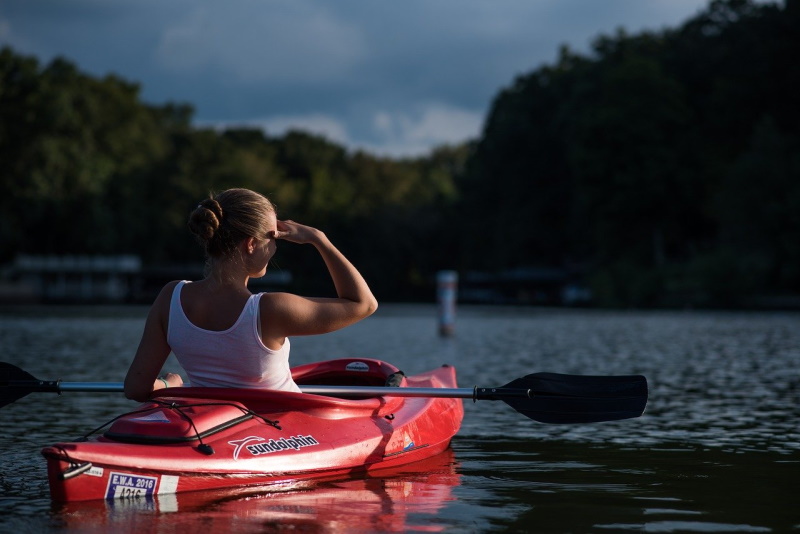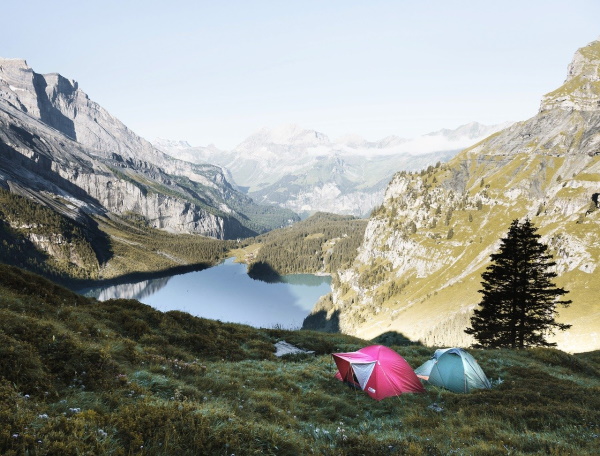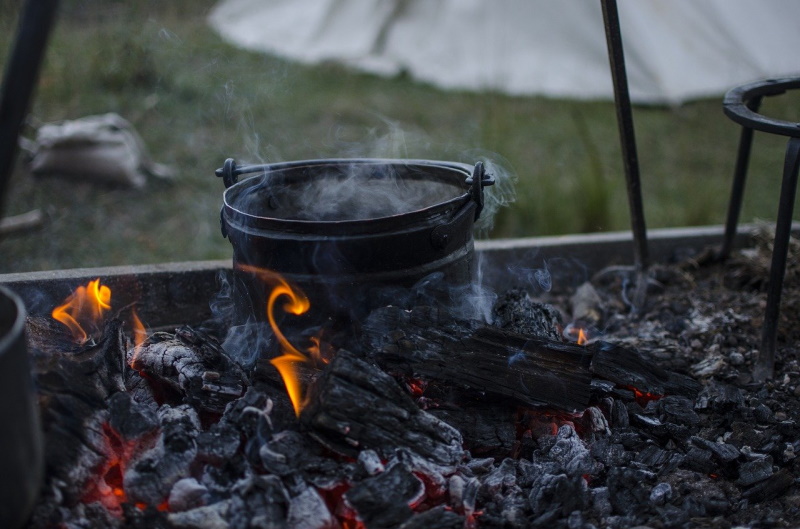Kayaking provides a wonderful opportunity to explore various ecosystems and enjoy the great outdoors. Besides being an exciting and fun activity, kayaking also grants you access to hidden wilderness areas, which you may not be able to reach via foot. But just like other outdoor activities, you will need to carry some essential supplies, to make your trip safer, successful and more enjoyable. Here are some of the items that you will need to pack for your kayaking trip.
Clothing and Footwear
Packing the right clothing can make a huge difference when it comes to kayaking. In fact, the clothes you carry can make or break your trip. You will have either a great kayaking trip or a miserable one. So, what clothes should you carry when you are going on a kayaking trip? Well, the clothing that you should pack will depend on the length of your trip, water temperatures for the area, predicted weather patterns and conditions, the route you intend to follow, as well as the kayak you will be using.
Basic Essentials
Some clothing pieces are so important that you should never leave them behind, regardless of the length of your trip, weather conditions or the kayaking you will be doing. The kayaking essentials that you will need for your trip include:
- Footwear: Proper footwear is usually overlooked when it comes to kayaking trips. However, it’s equally important as the rest of your accessories. Most people carry flip-flops when going kayaking. As much as they are lightweight and fast-drying, they are not always the most appropriate choice of footwear for such conditions. Instead, you should carry breathable and durable shoes, with a decent amount of grip on wet surfaces. Also, your choice of footwear should keep your feet dry and warm. Your shoes should also allow water to drain out easily.
- Personal flotation device: It’s mandatory for all kayakers to have personal flotation devices, whenever they are out there in the water. You can either wear the device or stow it on your kayak. If you opt to stow it on your kayak, you should ensure that it’s within easy reach. Also, it’s important to note that all personal flotation devices are not made equal. And that’s why you need to choose the right one for your body. Ideally, personal flotation devices should fit snugly but they should not be too tight. They should also allow your arms to move freely.
- Helmet: If you will be doing some white water rafting or kayaking, then you should carry a helmet. A helmet will protect your head against rocks, other vessels, trees as well as other hard objects, in case your vessel capsizes.
- Gloves: You should also pack a good pair of gloves when you are going on a kayaking trip. Besides keeping your hands warm and comfortable, the right pair of gloves will protect your hands against paddle abrasion, thus helping to prevent blisters. Gloves will also help to maintain a proper grip on the paddle, especially when it’s wet. The gloves you choose for your trip should allow enough space for your fingers, should be flexible and they should not cut off circulation.
- Spray skirt: Spray skirts are designed to keep water off the cockpit, thus helping to keep your lower body dry, warm and comfortable. A spray skirt will also shield your legs against the sun during the summer.
Warm Weather Kayaking
If you are going for a summer kayaking trip, you might be tempted to think that you will only need to pack a few t-shirts and some shorts. However, conditions out there are highly unpredictable. And that’s why you need to be adequately equipped to tackle the elements. For warm weather kayaking, you will need a wide-brimmed hat, sunglasses, long sleeves or trousers, and some sunscreen lotion. The wide-brimmed hat will protect your head, face, ears, and neck from the harsh UV rays. On the other hand, the sunglasses will protect your eyes from the sun’s glare that is reflecting off the water. Also, the sunglasses will protect your eyes against water sprays.
When kayaking in warm weather, you need to stay properly hydrated at all times. Also, you should avoid cotton clothing at all costs. As much as cotton is renowned as a cool material, it tends to retain moisture when it’s wet. Therefore, it will become uncomfortable when you sweat or when water splashes on your on it. Instead of wearing cotton, you should opt for fabrics with moisture-wicking capabilities.
Cold Weather Kayaking
When kayaking in cold weather, the dangers that you will face are swim failure, cold shock as well as hypothermia. Packing appropriate clothing will help to prevent these risks while keeping you safe and comfortable. The clothing pieces that you carry for cold weather should help to keep your body warm, regardless of the conditions that you encounter. For cold weather kayaking, you will need:
- Drysuit: Sealed at the feet, wrists, and neck, a drysuit is designed to provide complete waterproof cover for your body. Most of them are made of laminated nylon or vulcanized rubber. However, it’s important to note that a drysuit alone will not provide comprehensive thermal protection. Therefore, you need to combine it with thermal clothing to keep your body dry and warm. When choosing a drysuit for your trip, you should choose one that is specifically designed for sailing, canoeing, and kayaking.
- Thermal base: The thermal base will keep your body dry and warm when you are sailing on the water. Your thermal base layers should be breathable, moisture-wicking and lightweight.
- Thermal hat: Your body loses a significant amount of heat through the head. Furthermore, your face is also highly vulnerable to cold, especially during high winds. Therefore, protecting both areas of the body should also be a priority. And this is where a thermal hat and a face mask come in. These two pieces of clothing will protect your head and face, thus helping to keep your entire body warm and cozy.
When choosing the pieces of clothing that you will wear during your cold-weather trip, it’s important to consider the temperature of the water where you will be kayaking. Water bodies such as lakes will remain cold even during the hottest months compared to shallow water bodies like rivers. Also, it’s wise to pack an extra set of thermal clothing and store it in one of the drybags. In case your main clothing becomes wet from water splashes, you will have a fallback plan.
Shelter and Sleeping Gear
If your kayaking trip will extend beyond one day, then you will need to pack a shelter system and some sleeping accessories. For shelter, you will just need to carry a camping tent. Camping tents are available in a wide range of sizes and design options. The size of your tent will depend on your travel party. If you will be going alone, then a lightweight, compact tent should be enough for your needs.
Apart from the tent, you will also need to carry a sleeping bag. Sleeping bags are available in different temperature ratings. Therefore, you need to choose one that aligns with the weather conditions that you expect in your destination. If possible, you should stay away from down-filled sleeping bags, since they tend to lose their warmth when they become wet. Instead, you should choose synthetic-filled sleeping bags. Apart from their exceptional water resistance capabilities, synthetic-filled sleeping bags will still provide warmth even when wet.
Food and Cooking Equipment
You will also need to pack cooking gear and food accessories if you will be spending several days out there. The must-have cooking essentials that you should pack are a camp stove, a cooler, pots, and pans, an iron skillet, cooking gloves, knives, spoons, bowls, and cups. You will also need a water filter system if you will be kayaking in salty waters. In case you bring along food, you should keep it fresh and well-sealed. It’s highly advisable to opt for meals that are lightweight, and easy to prepare and those that use common ingredients. With this approach, you will reduce the cooking supplies that you will have to pack for your trip.
Packing Your Kayak
Besides carrying the right gear, learning how to pack your kayak properly is equally important. As much as there is no single right method on how to pack a kayak or a canoe, there are some vital considerations that you need to keep in mind. Whether you are going for a day trip, an overnight trip or a multi-day kayaking trip, here are some tips and tricks on how to pack your kayak.
Weight Distribution
You should pack heavier items like water and food close to the middle of the kayak. On the other hand, lighter items such as clothing and sleeping bags should occupy the space towards the ends. All your gear should be centered from side to side and packed low. This arrangement will help to keep your kayak stable, even when you encounter rough waters.
Organization
When packing your gear and accessories inside the kayak, you should store them in a way that you can easily access them throughout the day. For instance, it’s highly advisable to store the items that you will be using frequently throughout the day such as your lunch near the top of the luggage. Gear such as sleeping bags and tents should go towards the bottom of the load since you will only need them at night.
Drybag Your Valuables
There is a high chance that your kayak’s hatch will allow in some water. And that water may damage your mobile phone, matches or other valuables stored in the hatch. To avoid such issues, you should drybag everything that can be damaged by water. Drybags are available in different colors and sizes. Instead of using a few larger ones, you should instead use smaller, color-coded ones, to make it easier to sort your valuables. Storing your items this way will keep them safe while saving you valuable time when it comes to sorting them.
Closing Remarks
Whether you are going for a single-day kayaking trip or you are planning to spend several weeks sailing on rivers and lakes, packing and carrying the right gear is vital. The weather conditions, the length of your trip and the nature of your kayaking trip will determine the supplies that you will carry.






0 comments